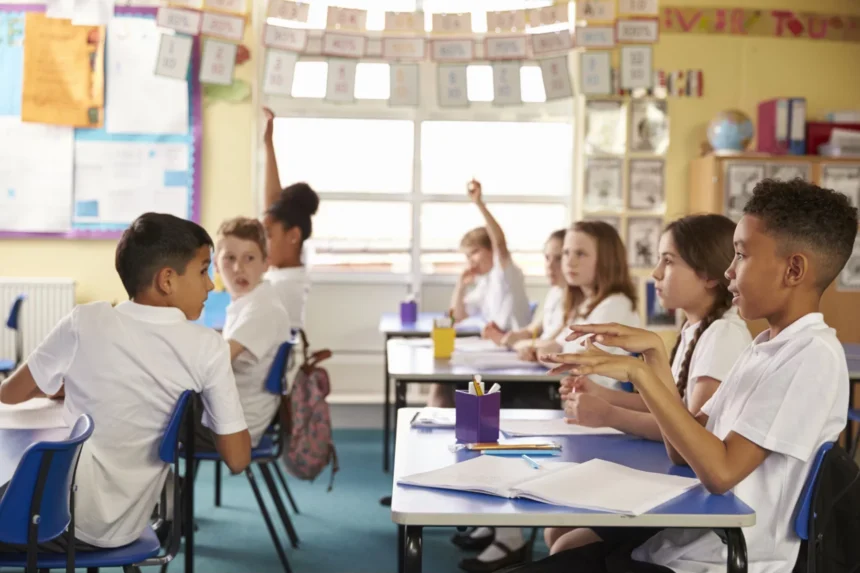An OCED study revealed that only Chile exceeds the UK’s 27 students in a class, with the pupil-teacher ratio in the UK among the highest.
UK primary class sizes are still among the highest in the advanced world despite the country’s continued investment. According to an international report, primary class sizes in the UK are larger than those in Turkey, Mexico, and Colombia and are among the largest in the industrialized world.
The Organisation for Economic Co-operation and Development (OECD) research, which compares the state of education in about 50 nations, discovered that a primary teacher in English handles a class of 27 students.
While the OECD average class size is 21, the UK and Japan have a primary class size of 27 students, and only Chile has a bigger class size of 28 pupils among industrialized nations. Croatia and Luxembourg, on the other hand, have a class size of 15.
The report says the pupils-to-teacher ratio in the UK is the fifth highest, following India, Mexico, Colombia, and Brazil.
Daniel Kebede, the general secretary of the National Education Union, commented on the findings: “This is consequential to every child. “Packed classes mean less contact time with individual pupils and directly make it harder to support each student.”
The study also revealed that the UK lags behind comparable countries when it comes to investment in primary education, with spending on the youngest children “well below” average.
The annual reports, which focused this year on concerns of equity, also disclosed regional disparities in educational achievement were bigger in the UK than in other OECD countries. It stated that in north-east England, 42% of people aged between 25-64 have degree-level qualifications, while London has 71%.
The report also disclosed that teachers in the UK are younger and less experienced than their colleagues in other countries. It also says that in 2022-2023, about 9% of teachers in the UK quit their profession, which is high compared to other countries included in the report.
There is also a sharp difference in spending choices between the UK and other OECD countries. The OECD claims that the UK’s spending on early years education is “well below” the OECD’s average and among the lowest of OECD countries, while spending on full-time tertiary education is “almost twice” the average. Meanwhile, other experts who attended the launch of the report challenged the figures of higher education spending.
The OECD report on government spending on early education was conducted before the government expanded funding for childcare for working parents, which began to roll out in April of this year.
Bridget Phillipson, the education secretary, speaking at the report launch, stated, “We need to get early education and childcare right so that all children get the very best start in life and all parents get the power to pursue their careers.” However, as your report shows, the gap in childcare enrolment between wealthy and poor families in the UK is one of the biggest in the OECD.
“All of early-years education is vital for our mission, not just childcare. Those first steps into education are so important for a child’s life chances and the sad truth is that a significant part of the attainment gap is already baked in by the age of five.”
The general secretary of the National Association of Head Teachers, Paul Whiteman, stated, “The fact that the UK is among the lowest of all OECD countries when it comes to per-pupil expenditure in early childhood education should be a source of deep concern.”
“High-quality early education remains one of the closest things we have to a silver bullet when it comes to addressing the attainment gap and should be a high national priority.”
Kabede stated: “Fourteen years of Conservative cuts to real-terms education budgets are coming home to roost. The OECD’s authoritative annual report can leave the world in no doubt that UK policymakers have been damaging our international standing.”















